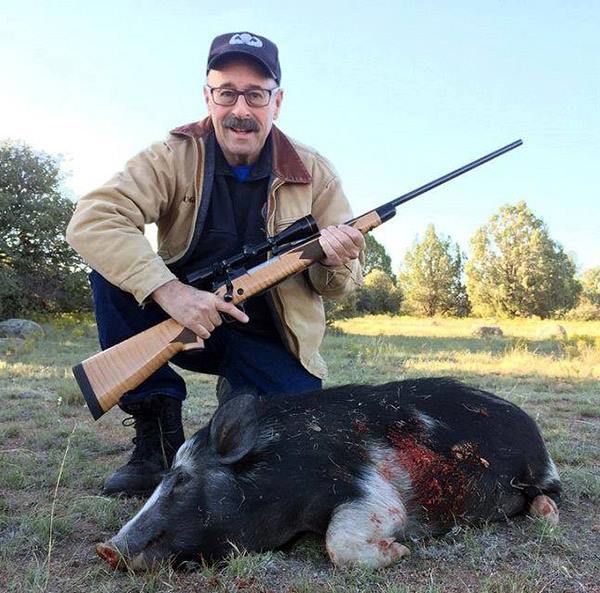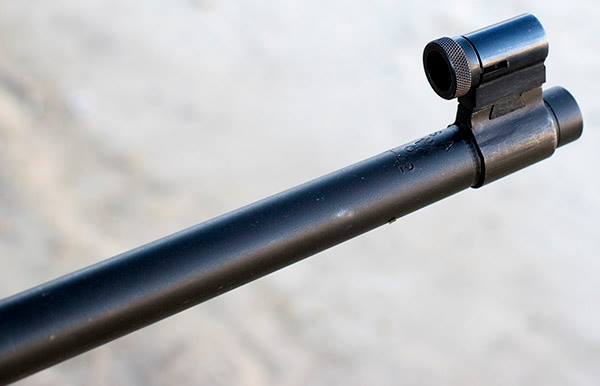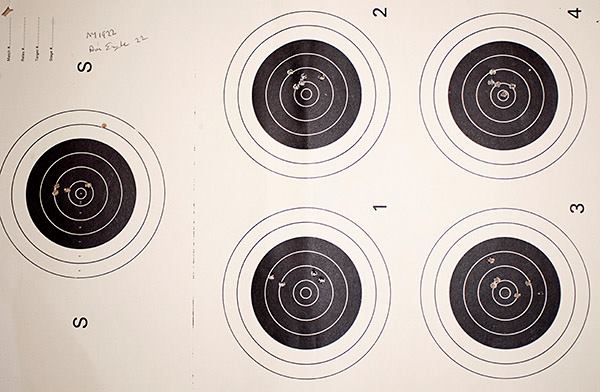
So, what’s this all about? A tale of two Springfields? Well, the topic is Springfield rifles, and specifically, the 1903 Springfield and its variants. I own two, and I think they are two of the finest firearms ever made. One is a 1903A1 with a scant stock (more on that in a bit). It’s a recent acquisition of a century-old rifle, and mine is essentially in as-new condition. It was gunsmithed from selected components so it’s not an original rifle, but I don’t care. I bought it to shoot it, and that’s what I’m doing. My other Springfield is an M1922, a special number chambered in .22 Long Rifle. It’s a magnificent rifle, it’s one I inherited from my father, and it is an amazing firearm. It’s in pristine condition, and boy oh boy, can it shoot!
The challenge here is to keep this blog short. There’s just so much to tell when the topic is the 1903 Springfield rifle and its variants. I’ll do my best to keep it manageable.


The Reader’s Digest version of the story goes like this…although we won the Spanish American War (and its Battle of San Juan Hill probably put Teddy Roosevelt in the White House), we very nearly got our butts kicked by the Spaniards. We were armed with antiquated, big-bore, rainbow-trajectory, single-shot rifles. The Spaniards had modern 7mm Mauser bolt action rifles, which were flatter shooting, faster (both in terms of reloading time and bullet velocity), and far more accurate. It was a dicey victory for us, and shortly after, the US Army incorporated the 1898 Krag rifle. We had to keep up with the Spanish Joneses.
While the Krag was a bolt-action rifle, it was not without problems, and we quickly developed a new rifle based on a modernized Mauser action initially chambered in a round called the .30 03. It fired a .308-inch diameter bullet (which is where the .30 part of the .30 03 name came from) and it was adopted in 1903 (which is where the 03 came from). We then improved the cartridge a bit in 1906 and it became the .30 06, or simply, the ’06. The ’06 is one of the world’s premier hunting cartridges, and many folks think is the best all-around cartridge on the planet. I’m one of them, but I digress. One more photo, and then back to the story.

Like I said, the original Springfield rifle was cambered for the .30 03 and the rifle was designed as the Model 1903. The .30 03 only lasted a short time and all of the 1903 rifles chambered for it were recut for the improved .30 06, but the rifle’s name remained the Model 1903. These early ones were cool, with straight grip stocks and elegant (but complex) rear sights. Then the rifle got a pistol grip stock, which I think looked cooler, and they became the 1903A1 rifles. Then they were made with stocks that were supposed to be straight grip stocks, but the Army wanted the pistol grip and the arsenal’s walnut blanks did not have enough meat to allow for a full pistol grip. The solution was to get as close as possible to a pistol grip from a straight grip walnut blank, which resulted in a shallow pistol grip; these became the “scant” stocks (presumably so named because the wood was too scant to allow a full pistol grip).



Later, the Army realized that the 1903’s fancy rear sight and other features were overly-expensive for a standard-issue battle rifle, so the ’03 was “value engineered” to make it less costly to manufacture. These became the Model 1903A3 rifles, often referred to simply as the ‘03A3.
Somewhere while all this was going on, the Army introduced versions of this rifle chambered in .22 Long Rifle. They were intended to be trainers, but they proved to be exceptionally accurate and the Army’s shooting teams (and others) competed with them.

The M1922s are phenomenal rifles, they are rare, and they are expensive in those rare instances they come on the market. My Dad bought one released through the Civilian Marksmanship Program 60 years ago for $25. Today, when one changes hands, you can bet the price is somewhere around $3,000. They’re that rare, and they’re that good.



You might be wondering: How do these rifles shoot?
Very well, thank you.


So, what happened to the 1903 as a military rifle? It served in World War I (although we couldn’t make them fast enough, so another rifle, the Model 1917, accounted for more than half the US battle rifles during the Great War). By the 1930s, we were already hard at work developing the Garand (that rifle fired the same .30 06 cartridge, and it was a semi-auto). The Garand became the US Army’s standard rifle in World War II. Interestingly, the US Marines stuck with the 1903 going into World War II, but they, too, soon switched to the Garand. The 1903 evolved into a specialty item. It was still recognized as phenomenally accurate and it became our sniper rifle in World War II (with a telescopic sight, it became the 1903A4).
Like I said, all of the above is the Reader’s Digest version of the story behind the Model 1903 rifle. The definitive reference on the 1903-series Springfield rifles is Joe Poyer’s The Model 1903 Springfield Rifle and Its Variations, and if you have a deeper interest in these historic and fine rifles, it is a book you should own. You can find it on Amazon.
Help us bring more stories to you: Please click on the popup ads!
Check out our other Tales of the Gun stories here!
Never miss an ExNotes blog! Sign up here:

Wow Joe these nice rifles make my Chiappa M1-9 Carbine look like a ………………………well a Chiappa M1-9 Carbine. M1-9 Cheap, yet satisfying ,ugly but better then a baseball bat 🤔 Very interesting article. Tomorrow im going to ask my brother, the troll who lives in the basement if he knows what 30 06 means.
Rob, as I recall, you are a very good shot with that Chiappa M1-9. Somewhere I have a photo of your target from that morning we spent on the range that proves it.